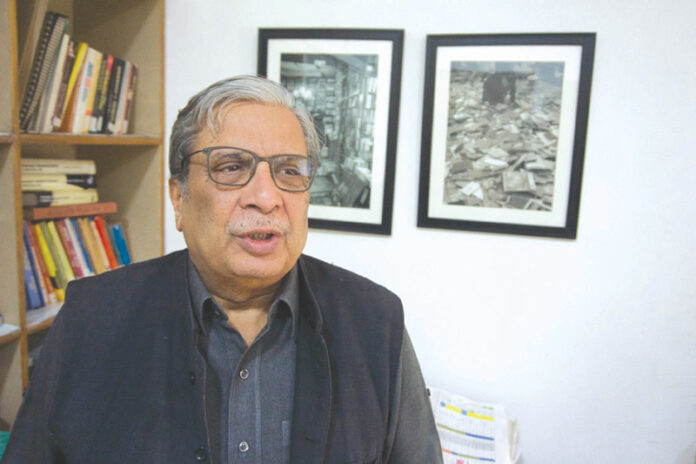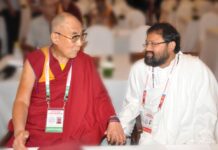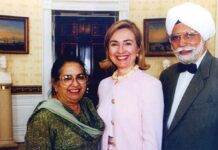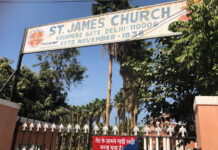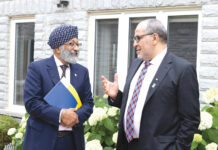By Dr Pramod Kumar
CHANDIGARH: Punjab has been transformed more by historical accidents than by the gradual process of historical evolution. As a result, we have now three Punjabs having distinct features, and metaphorically with a common umbilical cord.
We have Indian Punjab, Pakistan Punjab and Diaspora Punjab (settled in Canada, the US, the UK and Europe). The partition of Punjab at the time of Independence, the reorganization of the states on a linguistic basis in 1956, and the Sikh identity assertion in Diaspora Punjab now – all these have long-term implications.
The demography of Punjab has been shaped by historical accidents and a gradual process of continuous emigration.
First, the partition of India in 1947 led to the division of the state of Punjab. It severely affected its cultural richness and economic growth as the capital city of Lahore (remained in Pakistan) was a cultural backbone and economic hub of composite Punjab. The Punjab was partitioned as Pakistan Punjab and Indian Punjab.
Pakistan Punjab has overburdened itself, on the one hand, as a ruling establishment guided more by geo-political considerations and on the other by cultural bondage. Both are conflictual. Let me illustrate.

Nearly two and a half decades ago, Pakistan was ruled by a democratically elected government. I visited Lahore to attend an international conference and received Punjabi cultural hugs signifying cultural bondage and the quest for sharing the cultural reservoir and resources. This was irrespective of my being a Hindu. It was an emotional response to a Punjabi (maybe a Hindu). A day later, Sri Lanka defeated India in the 1996 World Cup cricket final held in Lahore. It witnessed Pakistani delegates hugging Sri Lankan delegates and cold-shouldering us Punjabis. This was an expression of India being a ‘hegemonic regional power’. Hence, the political hugs.
During the deliberations, the major theme explored was the developing countries’ sense of powerlessness in the face of the US authoritarian misadventures in the Middle East – which provoked solidarity among South Asians, including Indians, Pakistanis and Sri Lankans. Hence, the survival hugs. Three contextual responses are pointers towards the existence of complex realities in Pakistan Punjab – political hostility, cultural bondage and desire for South Asian solidarity.
Second, the reorganization of Punjab in the seventies led to a new Haryana state and the transfer of some areas to Himachal Pradesh. Thereafter, Chandigarh, the capital of Punjab, became a Union Territory and the common capital of both Punjab and Haryana.
Partitioned Punjab lost Lahore and re-organised Punjab lost Chandigarh as their capital cities. It is an established fact that capital cities act as reservoirs of culture and social capital. And these cities stimulate technology, establish a network of communities and tap resources. The capital city acts as a driver of growth of culture, human resources and economic development.
READ: Parkash Singh Badal’s classmate in Lahore college recalls their hostel days
In the re-organised Punjab, culture and language transcended religious group boundaries, and initiated the integration process of the diverse religions and caste identities. It added its own regional flavour to caste and religious identities. This can be attributed to the role played by religious reform movements in Sikhism and Hinduism (Arya Samaj, and Brahmo Samaj). This weakened the orthodox behavioural aspects of inter and intra-religious and caste practices. For instance, Punjabi Hindus have dominant traits of Sikhism, and their normative behaviour is influenced by the Arya Samaj and selected rituals of Sanatan Dharma. This is reflected in Punjab’s politics.
For instance, in the 2014 Parliament elections, the BJP could not garner the votes of urban Hindus even when the Hindutva wave was sweeping other parts of the country. In the Amritsar constituency, the urban vote (predominantly Hindu-dominated) share of the then BJP candidate Arun Jaitley was less than 30 per cent, whereas he got around 50 per cent rural vote share because the BJP was contesting elections in alliance with the Akalis. And, on the contrary, Capt. Amarinder Singh, then in the Congress Party, got more urban votes in the Hindu-dominated areas, i.e. 54 per cent, than in the Jat Sikh-dominated rural areas.
Moreover, in Indian Punjab, religio-caste categories are intermeshed. For instance, the Scheduled Castes constitute more than 32 per cent of the total population. But they are divided among Mazhabis, Chamars, Ad-Dharmis and Balmikis and thus are not represented by any caste-based party. It shows that Indian Punjab is multi-cultural and provides space for competing identities – religious, secular and those who harbour separatist tendencies.
Unlike Diaspora Punjab, Indian Punjab has nurtured a secular Punjabi identity. No doubt, there have been assertions of distinct religious identities. For instance, an estimated 47 per cent of Punjabi Hindus, according to the 1971 census, mentioned their mother tongue to be Punjabi. The same figures increased to 83.87 per cent by 1991. Further, the adoption of the Moga declaration by the Akali Dal and the BJP emphasising Punjab, Punjabi and Punjabiat was a testimony to the space available for a secular Punjabi identity.
Contrary to this, Diaspora Punjab has divergent predispositions. Let me give an example. In 1989, I happened to deliver a talk on `Genesis of Violence in Punjab’ in Montreal, Canada. My argument was that “the invasion of the sacred precincts of the Temple complex left a trail of misery, violence and sense of hurt among members of the Sikh community, including tsecular Punjabi Hindus. It blemished the stature of leaders like Indira Gandhi and Rajiv Gandhi. If Jarnail Singh Bhindranwale could not become an unquestioned icon of the Sikh masses, the former Indian Prime Ministers, responsible for Operation Blue Star and the 1984 Sikh killings, also got marginalized in the Indian secular democratic civilizational matrix.”
After the talk, a young Canadian lady asked me: ‘Are you a Punjabi Hindu?’ When I said `yes,’ she asked: ‘How can a Punjabi Hindu be secular? May I invite you home for dinner tomorrow?’
The next day, she told me that she can’t host me as her Sikh husband has refused to dine with a Punjabi Hindu because he believed Hindus never owned the Punjabi language as their mother tongue, Punjabi culture and its history.
I told her: “In Indian Punjab, not many Sikhs held this view. All Punjabis thought the teachings of the Gurus were inclusive. Those who believed otherwise were either fanatics or ignorant.” This incident happened at a time when terrorism was at its peak in Punjab.
It is a fact that out-migration from Punjab has transformed the state’s demography. Every young and red-blooded Punjabi is crazy to go abroad. They will take any risk to attain ‘the foreign mystique’ and thus elevate their family status back home even if they have to undertake ‘unclean occupations’ and face racist insults and humiliation in foreign lands. Past memories from Punjab act as a temporary anchor to help them bear the shock of rootlessness.
Varied experiences of these Punjabi immigrant populations have often led to some characteristic over-reaction to the unfolding social, cultural and political scenario in their place of origin. Their exaggerated responses to the political situation in Punjab is partly the result of the social, cultural and political environment of the foreign country where they live now. That’s why the younger generation of Canadian Punjabi Sikhs has been socialized into the tragic events of the 1980s. These events have been used as a source of justification for revengefulness for the hurt Sikh psyche. And the divisive and separatist fringe groups continue to be actively engaged in ensuring that the brutal legacy keeps simmering and regenerating itself.
But in Indian Punjab, history moved on. Operation Blue Star became a marker for respecting religious groups rather than being a symbol of social divisiveness, politics of religious dominance and assertion of theocratic Sikh State. The hurt which was felt by the Sikh community after four decades of churning seemed to have become universal and is felt by all Punjabis. It transcends the boundaries of religion. There is a consensus to ensure justice for the Sikhs killed mercilessly in 1984. But the articulation of Punjabi identity is yet to take hold in Diaspora Punjab.
(Prof. Pramod Kumar, who is the chairperson of Chandigarh-based Institute for Development and Communication, has served as chief advisor to the states of Punjab, Haryana and Uttarakhand on governmence reforms)

